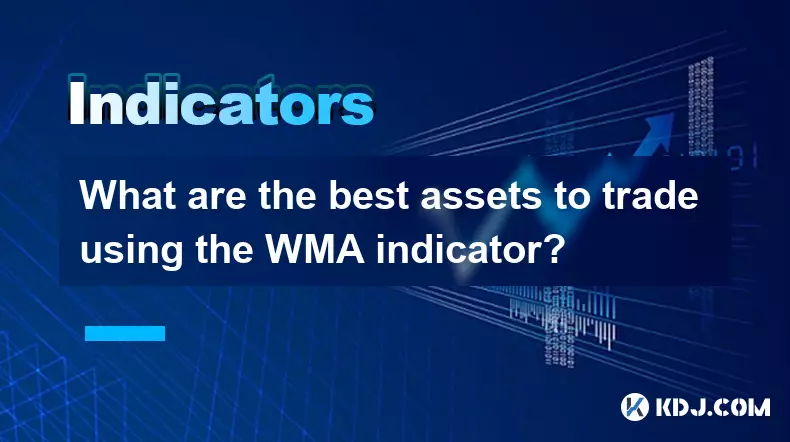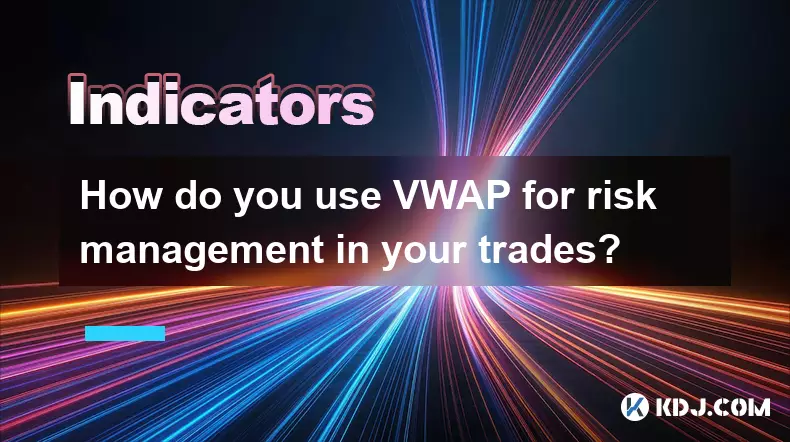-
 bitcoin
bitcoin $114684.631706 USD
-0.87% -
 ethereum
ethereum $4228.677447 USD
1.58% -
 bnb
bnb $1294.880693 USD
-1.16% -
 tether
tether $1.000819 USD
-0.02% -
 xrp
xrp $2.605138 USD
2.79% -
 solana
solana $209.908690 USD
5.89% -
 usd-coin
usd-coin $0.999903 USD
-0.03% -
 dogecoin
dogecoin $0.213423 USD
2.93% -
 tron
tron $0.322721 USD
-0.10% -
 cardano
cardano $0.727247 USD
3.66% -
 hyperliquid
hyperliquid $42.339456 USD
6.05% -
 chainlink
chainlink $19.910811 USD
5.16% -
 ethena-usde
ethena-usde $1.000557 USD
0.00% -
 stellar
stellar $0.349734 USD
2.69% -
 bitcoin-cash
bitcoin-cash $543.848687 USD
-0.21%
What are the best assets to trade using the WMA indicator?
The WMA indicator works best with high-liquidity cryptos like BTC, ETH, and BNB, offering reliable signals during trends, while volume confirmation enhances accuracy in spotting real breakouts.
Oct 11, 2025 at 09:00 pm

Best Cryptocurrencies for Trading with the WMA Indicator
1. Bitcoin (BTC) remains one of the most reliable assets when applying the Weighted Moving Average (WMA) indicator. Its high liquidity and consistent trading volume allow the WMA to generate accurate signals without excessive noise. The gradual price movements during trending phases make it easier to identify entry and exit points based on crossovers.
2. Ethereum (ETH) follows closely due to its strong market correlation with BTC and active development cycle. The WMA effectively captures momentum shifts during network upgrades or major protocol changes. Traders often use shorter WMA periods to react quickly to volatility spikes triggered by DeFi activity or gas fee surges.
3. Binance Coin (BNB) exhibits predictable patterns tied to exchange-based events such as token burns or listing announcements. These recurring fundamentals create momentum waves that align well with WMA smoothing techniques. The asset’s responsiveness to market sentiment enhances signal clarity when combined with volume analysis.
4. Solana (SOL) has shown strong trend behavior in recent bull runs, making it suitable for WMA-based strategies. Its rapid price accelerations are often preceded by consolidation phases clearly visible through WMA slope changes. The low-latency blockchain attracts speculative capital, which amplifies trend strength once confirmed by moving average alignment.
5. Cardano (ADA) provides steady movement over extended periods, ideal for medium-term WMA applications. The project’s methodical rollout schedule results in anticipation-driven price action, allowing traders to position ahead of catalysts using WMA support levels as dynamic floors.
Altcoins with High WMA Signal Reliability
1. Avalanche (AVAX) demonstrates clean trend structures influenced by subnet adoption and ecosystem incentives. The WMA helps filter out short-term noise caused by airdrop farming, focusing instead on sustained directional moves supported by on-chain metrics.
2. Polkadot (DOT) benefits from governance cycles and parachain auctions that create measurable momentum buildups. Applying WMA across multiple timeframes enables traders to distinguish between speculative flares and genuine accumulation phases.
3. Chainlink (LINK) shows consistent reactions to oracle integration news and cross-chain expansions. Its price tends to respect WMA lines during sideways markets, turning them into actionable resistance or support zones upon retests.
4. Polygon (MATIC) reacts strongly to partnership announcements and layer-2 adoption metrics. The WMA serves as an effective tool to gauge the sustainability of breakout attempts, especially when aligned with rising transaction volumes.
5. Algorand (ALGO) features minimal whale manipulation compared to other altcoins, resulting in smoother price curves. This characteristic increases the accuracy of WMA-generated signals, particularly when used in conjunction with order book depth analysis.
Stablecoins and Paired Strategies Using WMA
1. While stablecoins like USDT or DAI do not exhibit directional trends, they play a crucial role in WMA-based trading systems. Monitoring BTC/USDT or ETH/USDT pairs allows traders to isolate crypto-native price action from macroeconomic fluctuations affecting fiat currencies.
2. Using WMA on volume-weighted stablecoin pairs improves trade execution timing. For instance, identifying increasing volume on upward WMA slopes in BTC/USDC charts can confirm institutional buying pressure before retail participation surges.
3. Some traders apply WMA to measure divergence between different stablecoin reserves. A growing gap between issuance rates of various stables may precede broader market shifts, detectable through subtle deviations in WMA trajectories across related assets.
4. In arbitrage setups, WMA helps assess convergence speed between exchanges listing the same coin against different stablecoins. Deviations beyond historical norms trigger alerts when crossing predefined WMA thresholds.
5. Yield-bearing stablecoins such as crvUSD or aUSDT introduce interest accrual dynamics. Applying WMA to their exchange rates versus non-yielding counterparts reveals temporary mispricings exploitable through automated strategies.
Frequently Asked Questions
Can the WMA indicator be used effectively on low-cap cryptocurrencies?The WMA performs poorly on most low-cap cryptos due to thin order books and susceptibility to pump-and-dump schemes. Sudden price spikes distort the weighted calculation, leading to false breakouts. It works best when minimum daily volume exceeds $5 million and market depth is verified across multiple exchanges.
Is there an optimal WMA period setting for intraday crypto trading?A 9-period WMA delivers responsive signals for 15-minute and 1-hour charts. When combined with a 21-period WMA as a secondary filter, it reduces whipsaws during range-bound conditions. Adjustments should account for specific asset volatility—higher for meme coins, lower for large caps.
How does WMA compare to EMA in fast-moving crypto markets?WMA places greater emphasis on recent prices than EMA, making it more sensitive to abrupt shifts. During flash crashes or news-driven rallies, WMA generates earlier reversal signals. However, this also increases vulnerability to spoofing attacks where large orders are placed and canceled to manipulate averages.
Should volume be factored into WMA-based decisions?Yes. Volume confirmation strengthens WMA crossover validity. A bullish crossover accompanied by volume above the 20-day average indicates real participation. Conversely, low-volume crossovers often fail, especially near key resistance levels identified by on-chain supply metrics.
Disclaimer:info@kdj.com
The information provided is not trading advice. kdj.com does not assume any responsibility for any investments made based on the information provided in this article. Cryptocurrencies are highly volatile and it is highly recommended that you invest with caution after thorough research!
If you believe that the content used on this website infringes your copyright, please contact us immediately (info@kdj.com) and we will delete it promptly.
- XRP Price Prediction: Weekend Rollercoaster or Rally?
- 2025-10-12 08:45:16
- Bittensor (TAO): Super Bullish Signals Point to Potential 2x Rally
- 2025-10-11 10:25:12
- Silver Price Correction: Navigating the Dip & Identifying Key SEO Keywords
- 2025-10-11 10:25:12
- Decoding Crypto Trends: Bittensor's Bull Run, Cardano's Dip, and LivLive's Presale Buzz in 'Uptober 2025'
- 2025-10-12 08:45:16
- MoonBull: The Crypto Meme Coin Promising 1000x Gains?
- 2025-10-11 10:30:01
- Crypto Payroll Revolution: Stablecoins, Altcoins, and the Future of Salary Payments
- 2025-10-11 10:30:01
Related knowledge

What's the main difference between VWAP and TWAP?
Oct 12,2025 at 11:54am
Understanding VWAP and Its Role in Crypto Trading1. Volume Weighted Average Price (VWAP) is a trading benchmark that calculates the average price of a...

How do you identify exhaustion moves using VWAP and its bands?
Oct 12,2025 at 08:00am
Understanding the Role of Decentralized Exchanges in Crypto Trading1. Decentralized exchanges (DEXs) operate without a central authority, allowing use...

How do you use VWAP to scale in and out of positions?
Oct 14,2025 at 02:19am
Understanding VWAP as a Dynamic Benchmark1. The Volume Weighted Average Price (VWAP) is not just an indicator—it functions as a dynamic benchmark that...

What are the main advantages of using VWAP over EMA?
Oct 11,2025 at 02:18am
Main Advantages of Using VWAP Over EMA1. Volume-Weighted Average Price (VWAP) incorporates trading volume into its calculation, offering a more accura...

How do you use VWAP on different chart types like Heikin Ashi?
Oct 11,2025 at 05:01pm
Understanding VWAP in the Context of Heikin Ashi Charts1. The Volume Weighted Average Price (VWAP) is a powerful analytical tool commonly used by trad...

How do you use VWAP for risk management in your trades?
Oct 11,2025 at 02:54am
Understanding VWAP as a Dynamic Benchmark1. The Volume Weighted Average Price (VWAP) serves as a crucial reference point in intraday trading by reflec...

What's the main difference between VWAP and TWAP?
Oct 12,2025 at 11:54am
Understanding VWAP and Its Role in Crypto Trading1. Volume Weighted Average Price (VWAP) is a trading benchmark that calculates the average price of a...

How do you identify exhaustion moves using VWAP and its bands?
Oct 12,2025 at 08:00am
Understanding the Role of Decentralized Exchanges in Crypto Trading1. Decentralized exchanges (DEXs) operate without a central authority, allowing use...

How do you use VWAP to scale in and out of positions?
Oct 14,2025 at 02:19am
Understanding VWAP as a Dynamic Benchmark1. The Volume Weighted Average Price (VWAP) is not just an indicator—it functions as a dynamic benchmark that...

What are the main advantages of using VWAP over EMA?
Oct 11,2025 at 02:18am
Main Advantages of Using VWAP Over EMA1. Volume-Weighted Average Price (VWAP) incorporates trading volume into its calculation, offering a more accura...

How do you use VWAP on different chart types like Heikin Ashi?
Oct 11,2025 at 05:01pm
Understanding VWAP in the Context of Heikin Ashi Charts1. The Volume Weighted Average Price (VWAP) is a powerful analytical tool commonly used by trad...

How do you use VWAP for risk management in your trades?
Oct 11,2025 at 02:54am
Understanding VWAP as a Dynamic Benchmark1. The Volume Weighted Average Price (VWAP) serves as a crucial reference point in intraday trading by reflec...
See all articles










































































